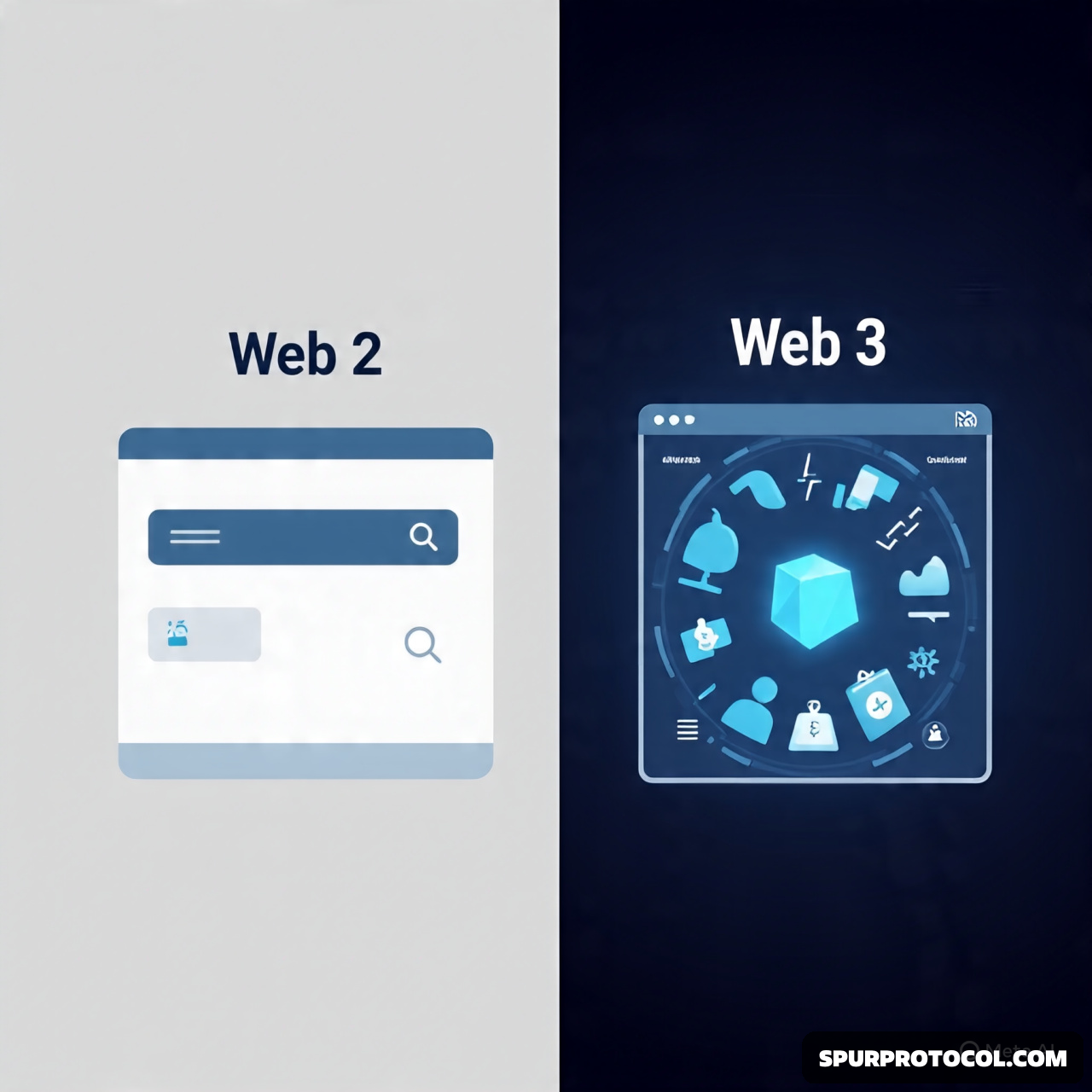Web 2.0 Vs Web 3.0: What You Need To Know.
Web2 and Web3 represent two distinct phases in the evolution of the internet, each with its own set of characteristics and implications for users and businesses.
Go Back

🕒 9:14 AM
📅 Jul 25, 2025
✍️ By MattCapability
1. WEB2: THE INTERACTIVE WEB
Web2, also known as Web 2.0, is the version of the internet we are most familiar with today. It emerged in the mid-2000s and is characterized by its interactive and social nature. Key features of Web2 include:
• USER-GENERATED CONTENT: Platforms like Facebook, YouTube, and Twitter allow users to create, share, and interact with content.
Centralized Control: Large corporations like Google, Amazon, and Facebook control most of the data and services. This centralization raises concerns about data privacy and security.
• INTERACTIVE WEB APPLICATIONS: Web2 introduced dynamic web applications that can interact with users in real-time, such as social media platforms and online marketplaces.
• CLOUD COMPUTING: Web2 leverages cloud computing to store and manage data, making it accessible from anywhere at any time.
2. WEB3: THE DECENTRALIZED WEB
Web3, or Web 3.0, is the next phase of the internet, built on blockchain technology and decentralized principles. It aims to address the limitations of Web2 by giving users more control over their data and online experiences. Key features of Web3 include:
• DECENTRALIZATION: Web3 uses blockchain technology to distribute data across a network of nodes, eliminating the need for centralized servers. This makes the internet more resilient and less susceptible to censorship.
• USER OWNERSHIP: In Web3, users own their data and digital assets. This is achieved through the use of cryptocurrencies and non-fungible tokens (NFTs), which provide proof of ownership and authenticity.
• TRANSPARENCY AND SECURITY: Blockchain technology ensures that all transactions and interactions are transparent and secure. This reduces the risk of data breaches and fraud.
• DECENTRALIZED APPLICATIONS (DAPPS): Web3 introduces DApps, which are applications that run on blockchain networks. These apps can provide a wide range of services, from decentralized finance (DeFi) to decentralized social media.
• SMART CONTRACTS: Smart contracts are self-executing contracts with the terms of the agreement directly written into code. They automate processes and ensure that agreements are executed as intended.
KEY DIFFERENCES
• CONTROL AND OWNERSHIP: In Web2, large corporations control user data and content. In Web3, users have ownership and control over their data and digital assets.
• DATA PRIVACY: Web2 platforms often collect and sell user data, raising privacy concerns. Web3 aims to give users more control over their data, enhancing privacy and security.
• TRANSPARENCY: Web2 platforms can be opaque about how they use and share user data. Web3's blockchain technology ensures transparency and accountability.
• INTERMEDIARIES: Web2 relies on intermediaries like banks and social media platforms to facilitate transactions and interactions. Web3 eliminates these intermediaries, allowing for peer-to-peer interactions.
FUTURE IMPACT
The shift from Web2 to Web3 has the potential to revolutionize the internet by making it more open, transparent, and user-centric. However, it also comes with challenges, such as complexity and scalability issues. As Web3 technology continues to evolve, we can expect to see more decentralized applications and services that empower users and enhance privacy and security.
